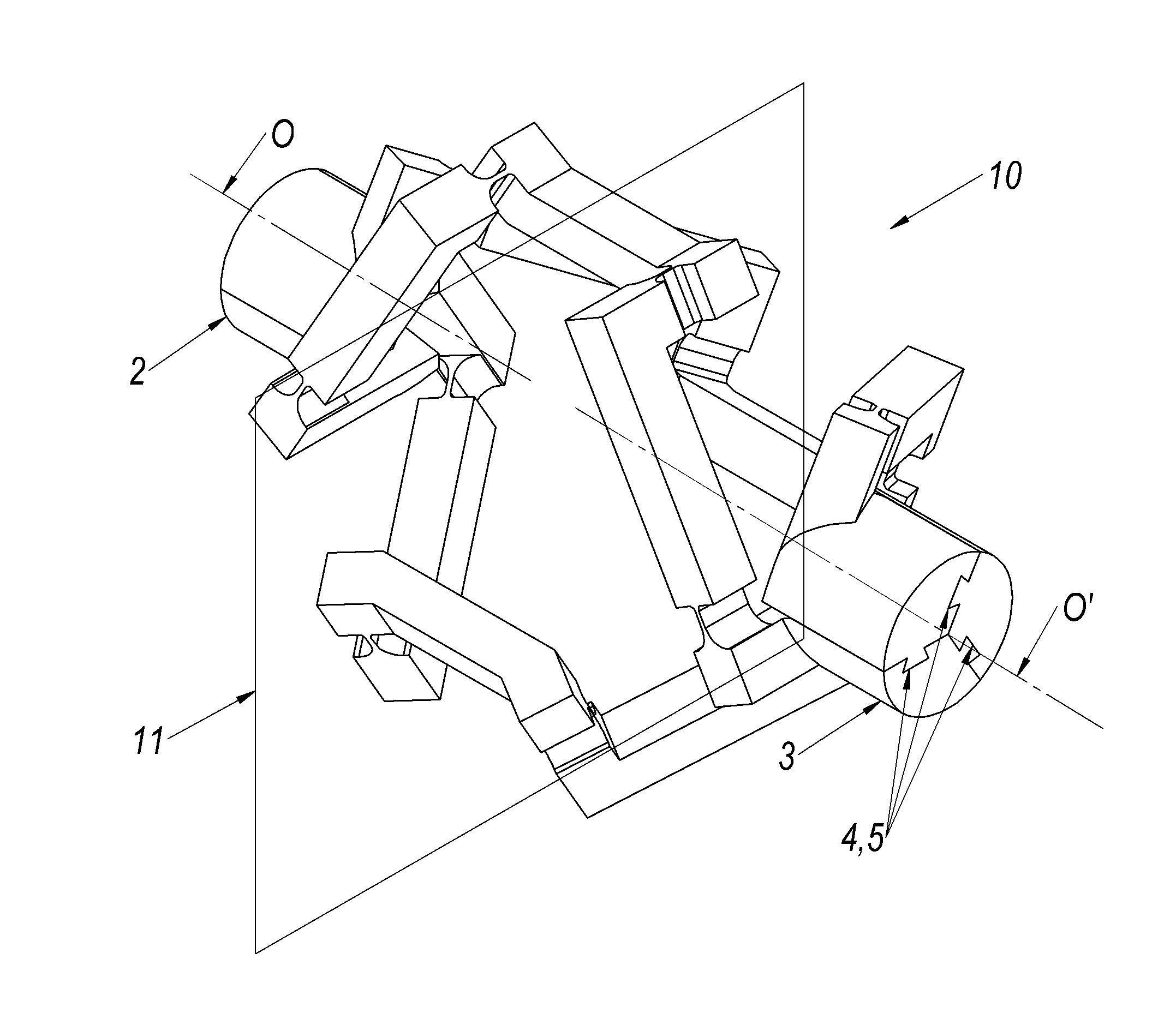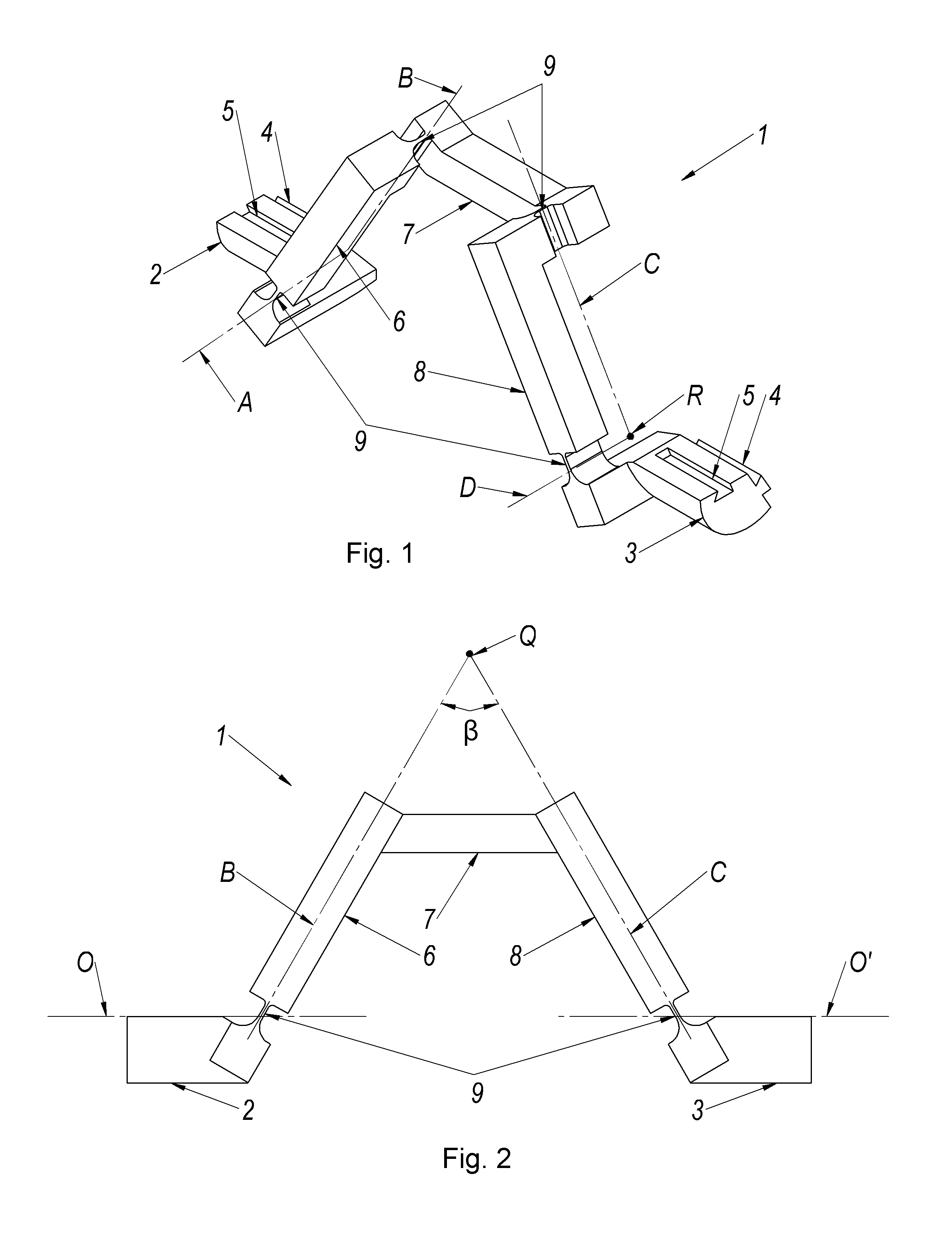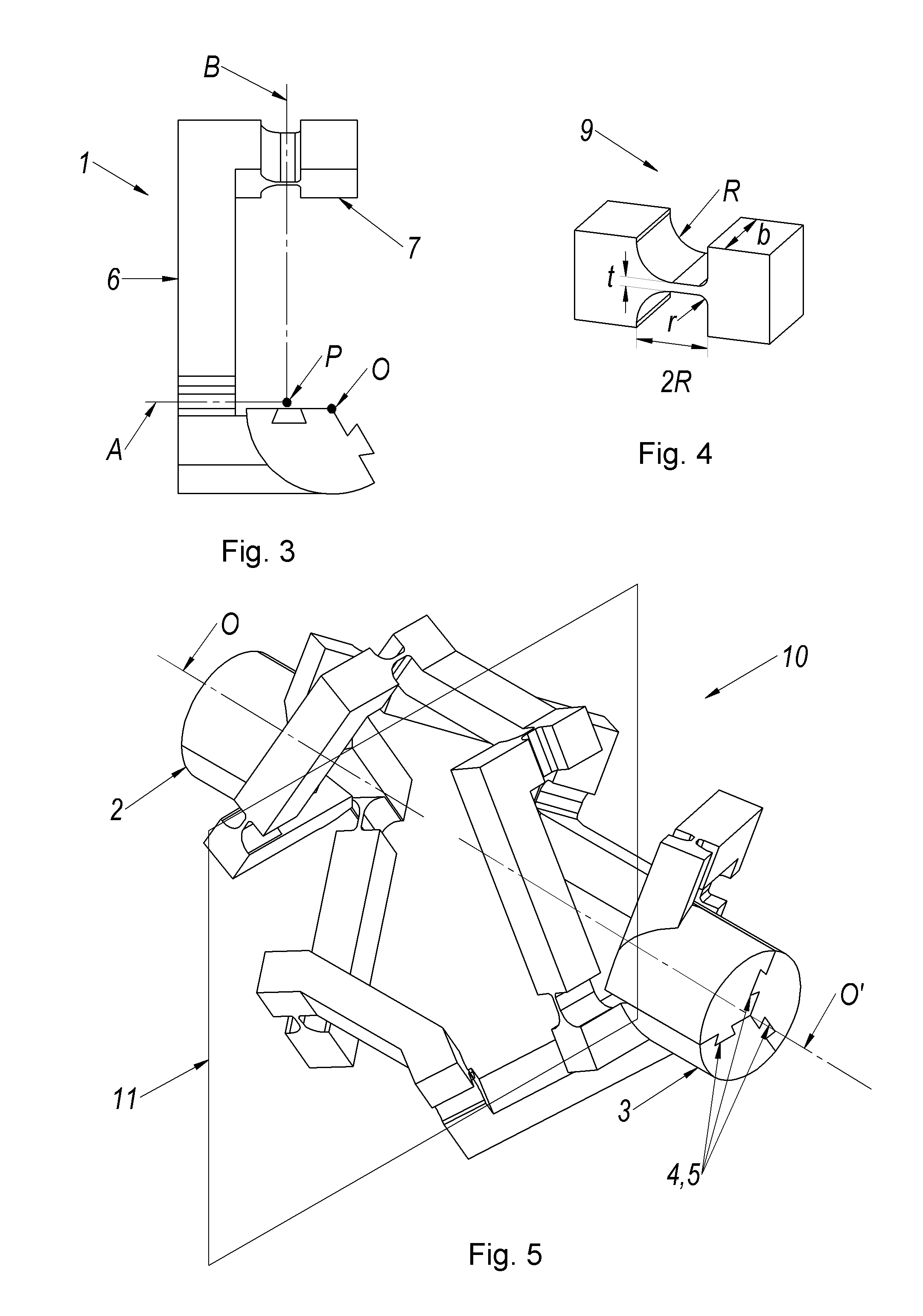Compliant constant velocity constant torque universal joint
a constant torque, universal joint technology, applied in the direction of yielding couplings, mechanical devices, couplings, etc., can solve the problems of non-constant velocity transfer function of hooke's universal joint, increased stress on the members of the universal joint, and potentially destructive vibration of the driven shaft. , to achieve the effect of simple mechanism construction
- Summary
- Abstract
- Description
- Claims
- Application Information
AI Technical Summary
Benefits of technology
Problems solved by technology
Method used
Image
Examples
Embodiment Construction
[0038]Reference will now be made to the drawings, wherein like numerals refer to like parts throughout. Referring to FIGS. 1-6, FIG. 1 illustrates one linkage 1 of a compliant constant velocity universal joint 10 which is shown in FIG. 5. As shown, the joint 10 includes a first independent link which can comprise a drive shaft 2 and a second independent link that can comprise—driven shaft 3. It will be apparent that while the linkage is described in conjunction with drive and driven shafts, the applicability of the current teachings can be applied between any two substantially rigid bodies. Pluralities of linkages 1 are assembled together in the manner shown in FIG. 5 to define the universal joint 10.
[0039]The drive shaft 2 is initially coupled to a cross link 40a that is attached to a crank link 6 via a first revolute joint 9a. The crank link 6 has a cross section 42a that is then connected to a coupler link 7 via a second revolute joint 9b. The coupler link 7 is then connected to ...
PUM
 Login to View More
Login to View More Abstract
Description
Claims
Application Information
 Login to View More
Login to View More - R&D
- Intellectual Property
- Life Sciences
- Materials
- Tech Scout
- Unparalleled Data Quality
- Higher Quality Content
- 60% Fewer Hallucinations
Browse by: Latest US Patents, China's latest patents, Technical Efficacy Thesaurus, Application Domain, Technology Topic, Popular Technical Reports.
© 2025 PatSnap. All rights reserved.Legal|Privacy policy|Modern Slavery Act Transparency Statement|Sitemap|About US| Contact US: help@patsnap.com



